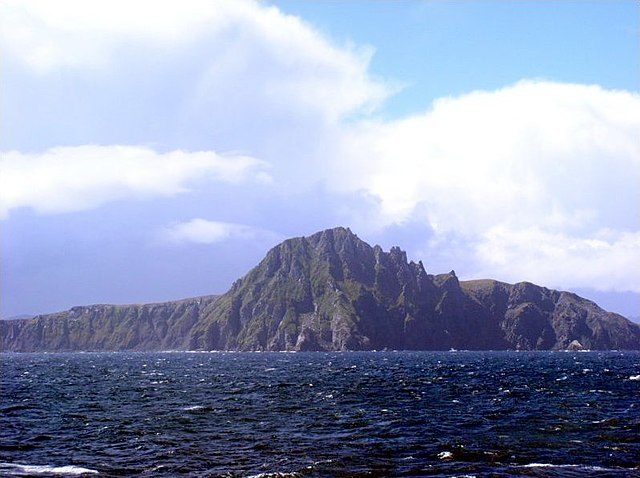The Drake Passage is the body of water between South America's Cape Horn, Chile, Argentina, and the South Shetland Islands of Antarctica. It connects the southwestern part of the Atlantic Ocean with the southeastern part of the Pacific Ocean and extends into the Southern Ocean. The passage is named after the 16th-century English explorer and privateer Sir Francis Drake.
Tourist expedition ship sailing across the Drake Passage to Antarctica
The plot shows an yearly average (2020) of the surface current strength (from GODAS dataset), together with streamlines. Following the streamlines, it is easy to see that the current is not closed in itself but interacts with the other ocean basins (connecting them). The Drake Passage plays a major role in this mechanism.
The Drake Passage influences the global surface temperature and Atlantic circulation.
Density (buoyancy) drives an internal circulation only if the denser (colder or saltier) water mass lays above the less dense (warmer or less salty) one. In absence of any perturbation, the fluid assumes a stratified form. Neglecting salinity differences, the only possible drivers of such a circulation are vertical temperature differences. However, water gets heated and cooled at the same level, namely at the surface at the equator and at the surface at the poles. The force that pushes colder water above warmer water is internal mixing, which is more intense in presence of rough topography, such as in the Drake Passage.
Cape Horn is the southernmost headland of the Tierra del Fuego archipelago of southern Chile, and is located on the small Hornos Island. Although not the most southerly point of South America, Cape Horn marks the northern boundary of the Drake Passage and marks where the Atlantic and Pacific Oceans meet.
Cape Horn
View from an unidentified sailing ship during a storm at Cape Horn, between 1885 and 1954
Approaching Cape Horn from the south-west.
Cape Horn from aboard the sailboat "Tari II", photographed by Ingo Kühl, october 25, 2009








